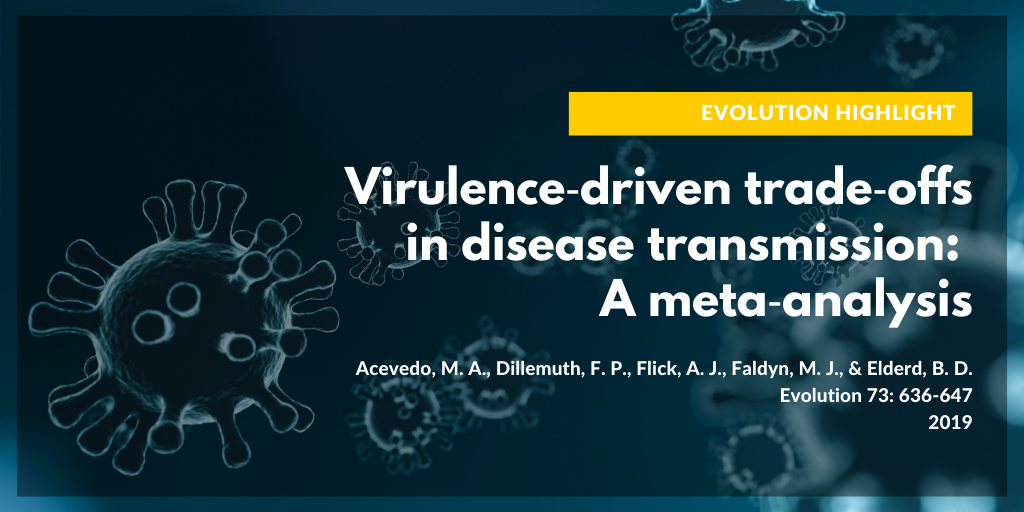Each month, the Evolution Highlights series will highlight some of the interesting and varied papers published within the last few years in Evolution. The goal of these Evolution Highlights is to let our readers learn more about how the highlighted study came into existence, and to invite the authors to share stories and tips from the perspective of a recently published author. We welcome nominations and self-nominations for the Evolution Highlights. Find out how to submit a paper here.

"Virulence-driven trade offs in disease transmission: A meta-analysis"
Acevedo, M. A., Dillemuth, F. P., Flick, A. J., Faldyn, M. J., & Elderd, B. D. (2019). Virulence‐driven trade‐offs in disease transmission: A meta‐analysis. Evolution, 73(4), 636-647.
https://onlinelibrary.wiley.com/doi/full/10.1111/evo.13692
Abstract:
The virulence–transmission trade-off hypothesis proposed more than 30 years ago is the cornerstone in the study of host–parasite co-evolution. This hypothesis rests on the premise that virulence is an unavoidable and increasing cost because the parasite uses host resources to replicate. This cost associated with replication ultimately results in a deceleration in transmission rate because increasing within-host replication increases host mortality. Empirical tests of predictions of the hypothesis have found mixed support, which cast doubt about its overall generalizability. To quantitatively address this issue, we conducted a meta-analysis of 29 empirical studies, after reviewing over 6000 published papers, addressing the four core relationships between (1) virulence and recovery rate, (2) within-host replication rate and virulence, (3) within-host replication and transmission rate, and (4) virulence and transmission rate. We found strong support for an increasing relationship between replication and virulence, and replication and transmission. Yet, it is still uncertain if these relationships generally decelerate due to high within-study variability. There was insufficient data to quantitatively test the other two core relationships predicted by the theory. Overall, the results suggest that the current empirical evidence provides partial support for the trade-off hypothesis, but more work remains to be done.
Evolution Highlight by Miguel Acevedo
Wildlife Ecology and Conservation, University of Florida
